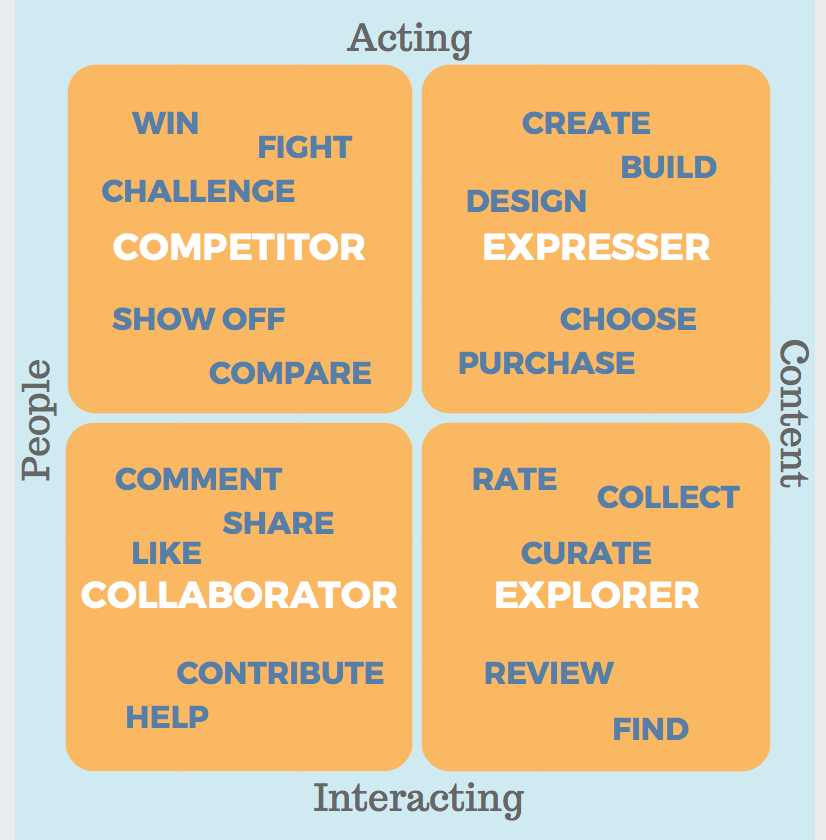The Gamification of Education - Part 2: Player Types
A blog by Adriana Lopez Forero, CEO
One of the best ways to understand using video game techniques in the classroom is through the lenses of player types.
Successful video games designers research and understand their core audience in order to select game mechanics that form a cohesive design and appeal to the player types within their audience.
There are different models describing player types, including:
- Bartle taxonomy of player types - based on player preferred actions within the game; and,
- The Four Keirsey Temperaments - based on personality types.
For the purpose of this blog and with a focus on education, we’ll use the model developed by Amy Jo Kim which talks about player motivation as a key differentiator. The graph below shows the four different types of player in this model: Competitor, Expresser, Collaborator, Explorer.

Amy Jo Kim's upcoming book Game Thinking will go deeper into these player types.
Back to eLearning, how does this model apply to virtual classrooms? Every virtual classroom has at least one of these student/player types. Their core motivations remain the same whether it’s a game, an online course or any other type of online media.
For education specifically, it’s important to keep motivations in mind when talking about student engagement and its effect on completion and dropout rates.
The same model viewed through an online education lens gives us insights into how to engage students and increase completion rates:
-
Competitors: It is not a surprise that achievements and test scores are a motivator for this type of student. The insight for online courses is to give competitors them the ability to show off their achievements: profile badges and top 5 boards are some examples.
-
Collaborators: This student type is sometimes the hardest to motivate on asynchronous course settings as the opportunities for social interactions are limited. That said, there are still plenty of ways to encourage this group to complete a course including: peer reviews, end of course forums, study groups.
-
Expressers: This student type craves to make a course their own through: virtual maker spaces, avatars, design challenges, multiple paths to completion. The options depend on the type of course.
-
Explorers: Hidden achievements and unlockable course materials are creative ways to appeal to the explorers in a course. These types of students will go through all the modules of a course looking for added material. Make sure to telegraph at the beginning of the course that there is extra content for those students looking to go deeper in the material.
The key when designing an online course is to keep these types in mind and ensure there is something for each one, especially as a motivator to complete the material and achieve the learning objectives for the course.
To learn more about gamification and online learning in the following articles: